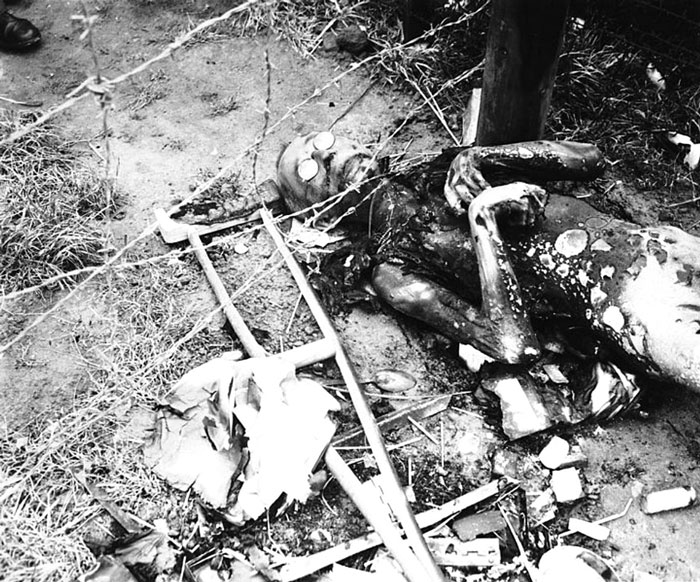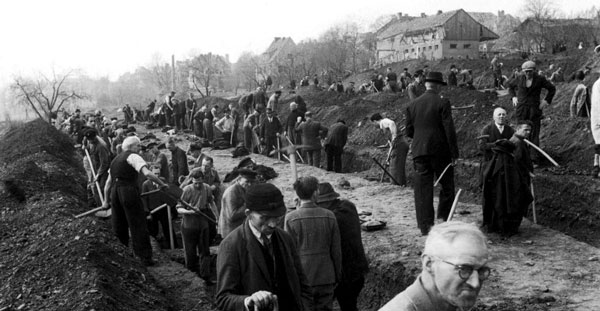Buchenwald concentration camp, Thuringia, Germany, April 1945. American soldiers force local German civilians to bear witness to Nazi atrocities at Buchenwald concentration camp, mere miles from their own homes after the camp had been liberated.
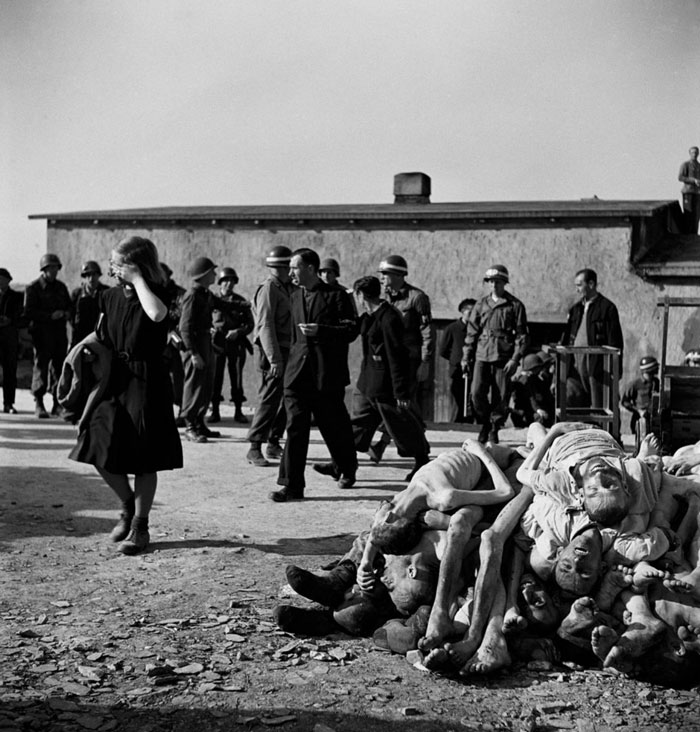
Image captured by Margaret Bourke-White
Prisoners of Buchenwald concentration camp, too weak to stand, still rest in their barracks after the liberation of the camp by the U.S. 3rd Army (United States Army Central). Buchenwald concentration camp, near Weimar, Thuringia, Germany, April 1945.
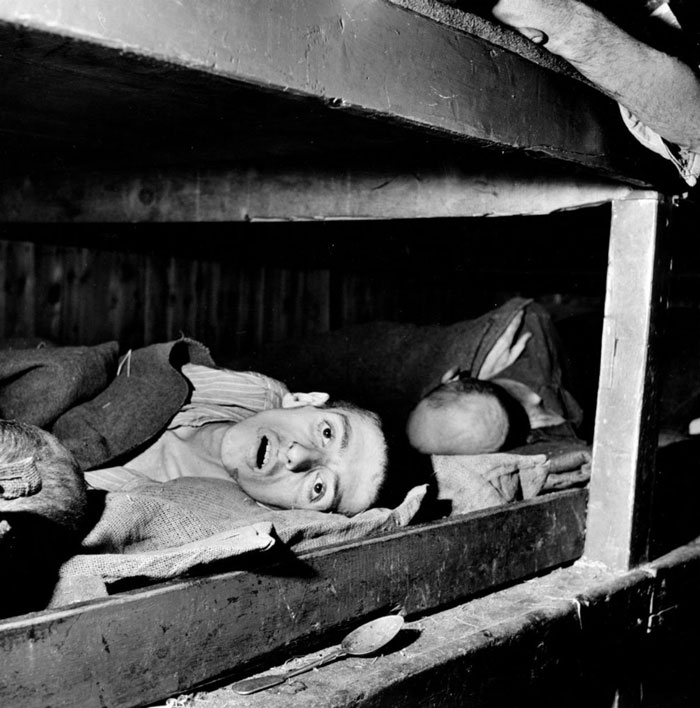
Photograph by Margaret Bourke-White
On April 10, 1945, U.S. Army Pvt. John M. Galione of the 104th Infantry Division discovered Mittelbau-Dora and broke into the camp with the help of two other soldiers before sunrise on April 11. Galione radioed the Third Armored Division and various 104th Division attachments, giving them directions to the camp.
The medics of the U.S. 3rd Armored Division reported that they discovered Nordhausen Camp on the way to Camp Dora. Dora and Nordhausen are two separate camps within the same complex. Lying in both camps were about 5,000 corpses. Over 1,200 patients were evacuated, with 15 dying en route to the hospital area and 300 subsequently dying of malnutrition.
American military personnel then forced men from the surrounding area to bury the dead to bear witness to German atrocities and the belief that the civilians knew more about what was happening within the camps than they would admit.
German civilians from the town of Nordhausen and surrounding area are forced to dig mass graves for the thousands of unburied bodies of inmates found at Nordhausen Camp, within Mittelbau-Dora concentration camp, a sub-camp of Buchenwald concentration camp. Nordhausen, Thuringia, Germany. April 1945.
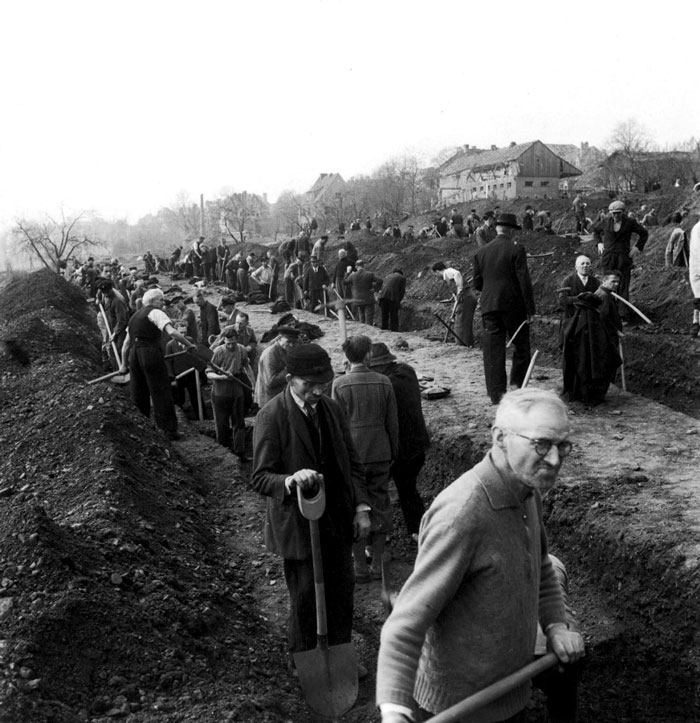
Image taken by John Florea
Emaciated and suffering from an array of diseases, Jewish prisoners in their barracks at Buchenwald concentration camp after the camp was liberated by the U.S. 9th Armored Infantry Battalion, 6th Armored Division, of United States Army Central.
Prisoners from all over Europe were incarcerated at Buchenwald and worked primarily as forced laborers in local armament factories; these included Jews, Poles, Soviet POWs, repeat criminal offenders, homosexuals, Gypsies (Roma), Jehovah’s Witnesses and other religious minorities, Freemasons, the mentally ill, foreign forced laborers arrested on various charges, communists and others with political ideologies that opposed National Socialism, amongst others.
On April 4, 1945, the U.S. 89th Infantry Division overran Ohrdruf concentration camp, a subcamp of Buchenwald. Buchenwald was partially evacuated by the Germans on 8 April 1945.
In the days before the arrival of the American army, thousands of the prisoners were forced to join the evacuation marches. Those remaining at Buchenwald were liberated April 11, 1945. Later that day, the U.S. 83rd Infantry Division liberated Langenstein, one of a number of smaller camps comprising the Buchenwald complex. The U.S. 80th Infantry Division took control of the camp the following day.
Buchenwald concentration camp, near Weimar, Thuringia, Germany. April 1945
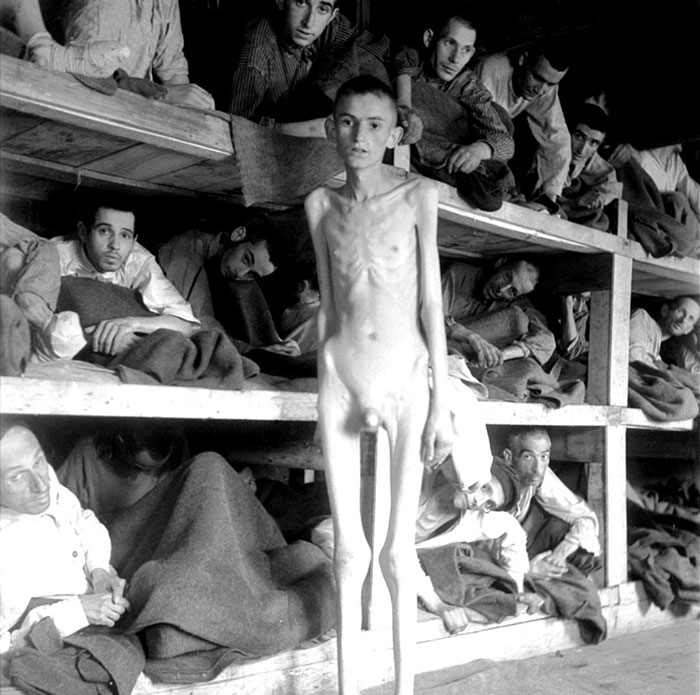
A French Jew sits amongst the dead at Mittelbau-Dora concentration camp, a sub-camp of Buchenwald concentration camp, following the camp’s liberation by the U.S. 3rd Armored Division and various 104th Infantry Division attachments on 11 April 1945. Near Nordhausen, Thuringia, Germany. April 1945.
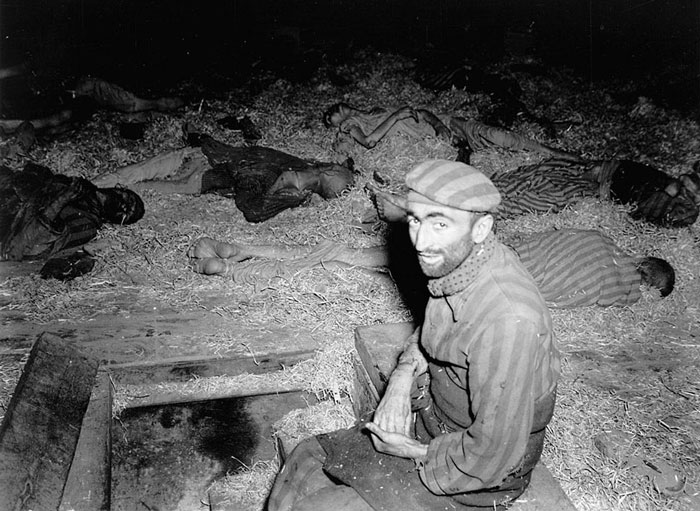
On 26 April 1942, a Polish forced laborer who worked at Bauern Schmidt’s courtyard was beaten to the point of unconsciousness by a German policeman named Albin Gottwald. Two Polish men took revenge on Gottwald and stabbed him to death on a forest path between Poppenhausen and Einöd. The two Poles then escaped.
One of the two Poles, Jan Sówka was apprehended shortly after his escape. On May 11, 1942, nineteen prisoners from Buchenwald concentration camp were taken to the place in the woods where Gottwald’s body had been found. They were to be punished for the act committed by Sówka and his accomplice.
The German soldiers built three gallows, two consisted of ten hooks each, and one was a single gallows. The 19 Polish prisoners were positioned behind the gallows, and Sówka stood on the opposite side. The executions began at 10:50 where the prisoners were hanged one after another.
Finally, Sówka was in turned hanged after being forced to witness the reprisal hangings of the other inmates. Hundreds of Polish forced laborers from the surrounding area were rounded up and forced to watch the executions.
19-year-old Polish slave laborer Jan Sówka awaiting execution by hanging for the murder of a German policeman. Poppenhausen, Thuringia, Germany. 26 April 1942.
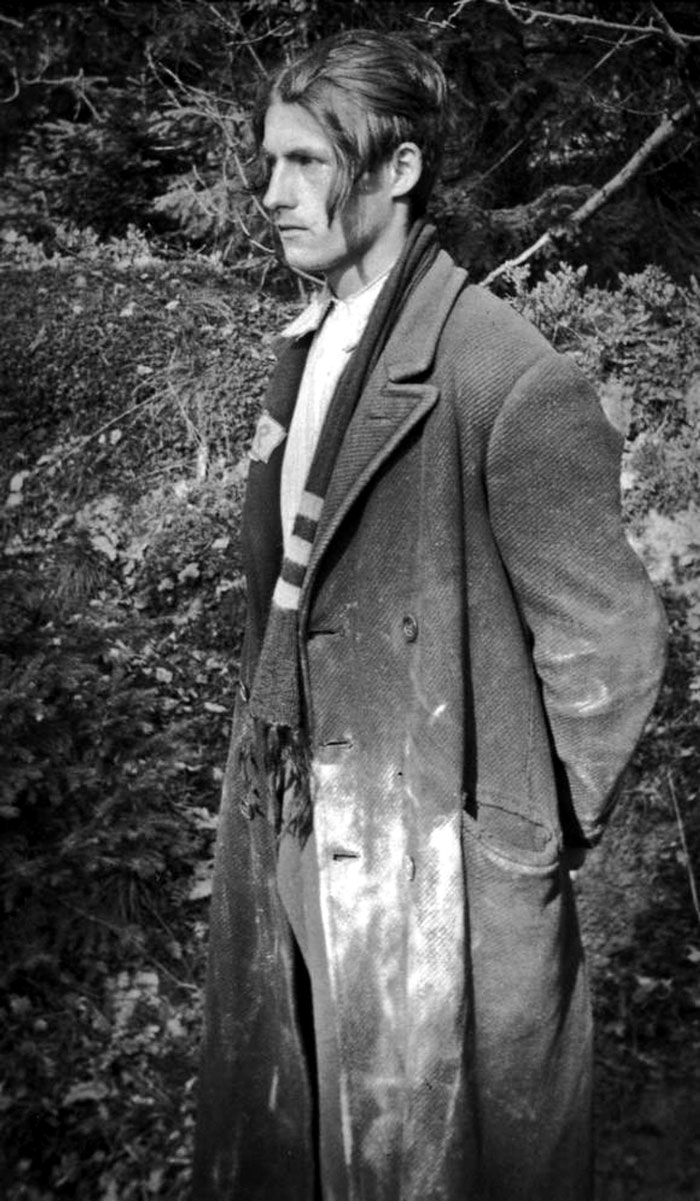
A truckload carrying the emaciated corpses of prisoners at Buchenwald concentration camp sits abandoned. The bodies were about to be disposed of by burning when the camp was liberated by detachments of American troops of the U.S. 9th Armored Infantry Battalion, 6th Armored Division, part of United States Army Central, on 11 April 1945.
Buchenwald concentration camp, near Weimar, Thuringia, Germany. 14 April 1945.
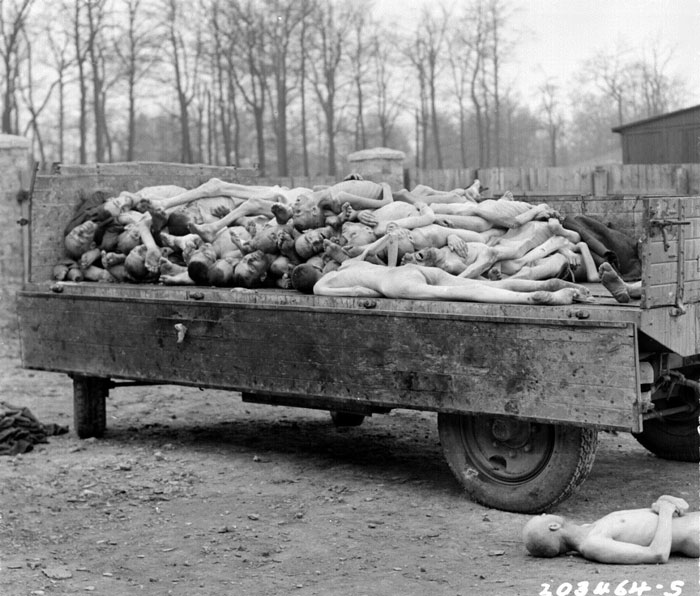
Image taken by U.S. Army Pfc. W. Chichersky
Following the liberation of Buchenwald by the U.S. 9th Armored Infantry Battalion, 6th Armored Division, part of the U.S Third Army (United States Army Central), on 11 April 1945 and the transfer of control of the camp to the U.S. 80th Infantry Division the following day, some of the camp guards donned civilian clothing or prisoner’s uniforms and tried to escape.
Nearly all were spotted by the newly liberated inmates and were savagely beaten and others killed.
A battered German SS camp guard after the liberation of Buchenwald concentration camp. This guard was locked up for interrogation, and his own safety. Buchenwald concentration camp. Near Weimar, Thuringia, Germany. April 1945.
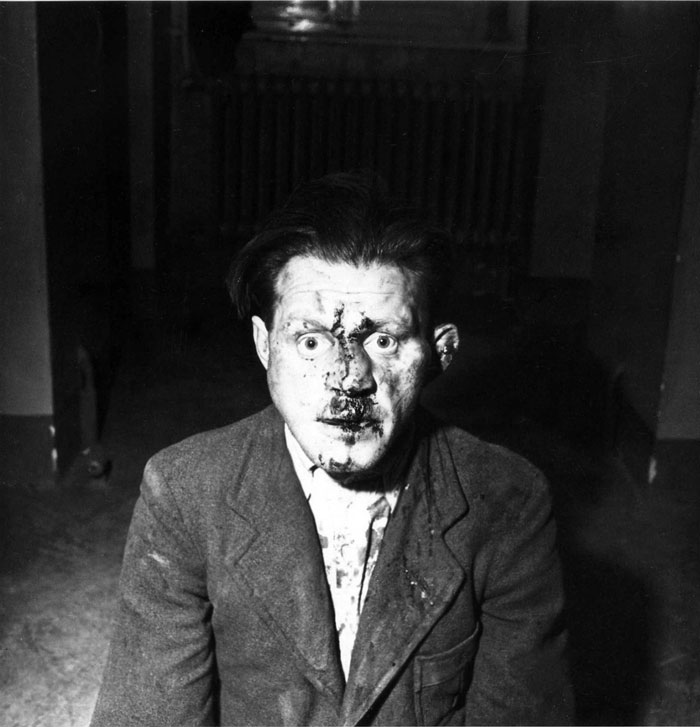
Image taken by Lee Miller
An emaciated former inmate at Buchenwald concentration camp drinks from a tin bowl in front of his barracks following the liberation of the camp by U.S. Army soldiers of the 6th Armored Division, Third Army (United States Army Central). Buchenwald concentration camp, near Weimar, Thuringia, Germany. April 1945.
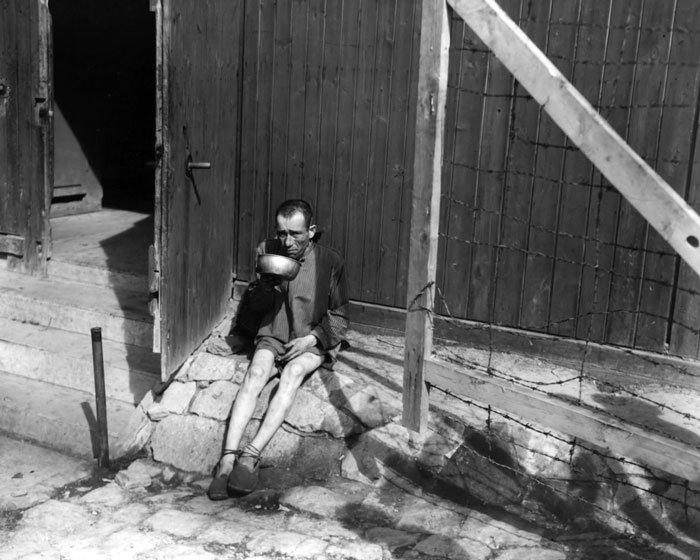
Image taken by Ardean R. Miller, U.S. Army
The day after this Shavuot service was held, a group of Jewish children, former inmates, were repatriated to their homes in Czechoslovakia. Rabbi Schacter remained at Buchenwald for months, tending to survivors and leading religious services. Buchenwald concentration camp, near Weimar, Thuringia, Germany. 18 May 1945.
Newly liberated Jewish survivors of Buchenwald concentration camp are joined by Jewish U.S. Army soldiers who helped liberate the camp for the first day of Shavuot (Feast of Weeks) religious service, conducted by U.S. Army chaplain Rabbi Herschel Schachter (far left) of VIII Corps, Third United States Army (U.S. Army Central).
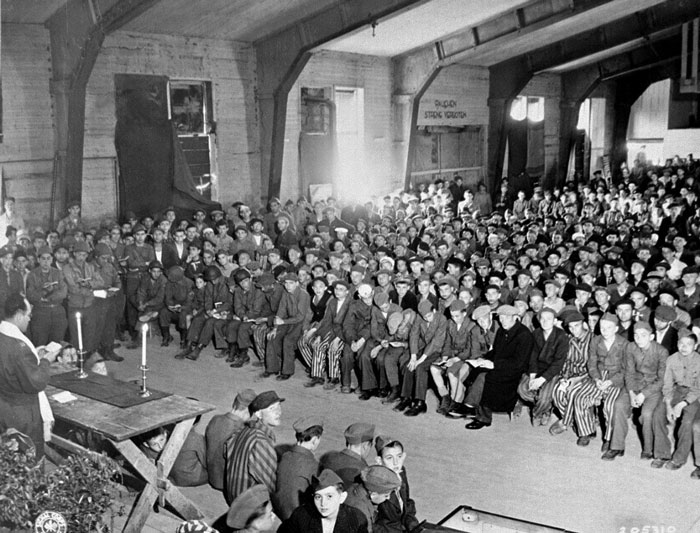
U.S. Army soldiers stand grimly around a heap of corpses following the liberation of Buchenwald concentration camp. A detachment of troops of the U.S. 9th Armored Infantry Battalion, from the 6th Armored Division, part of the U.S. Third Army arrived at the main camp of Buchenwald on April 11, 1945. Between April 1938 and April 1945, some 238,380 people of various nationalities were incarcerated in Buchenwald.
One estimate places the number of deaths at 56,000. Buchenwald concentration camp, near Weimar, Thuringia, Germany. 11 April 1945.
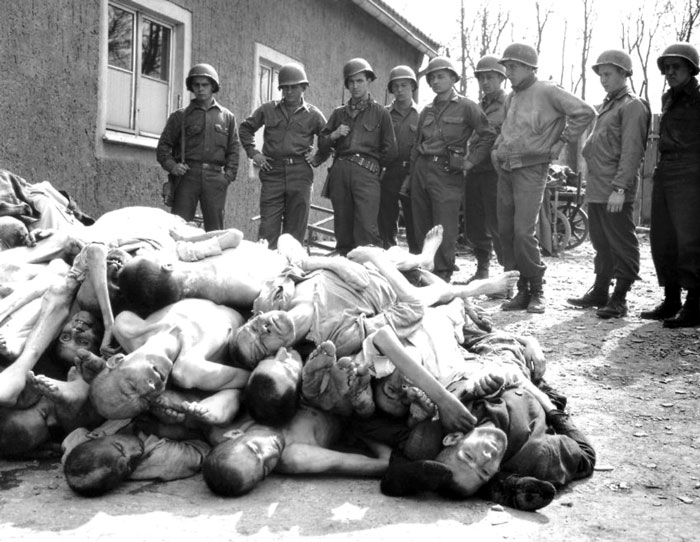
Buchenwald concentration camp was one of the largest and earliest concentration camps; Dachau being built in 1933 was the first to be built. The main camp was liberated 11 April 1945 by a detachment of troops of the U.S. 9th Armored Infantry Battalion, from the 6th Armored Division, part of the U.S. Third Army (United States Army Central). Buchenwald concentration camp, near Weimar, Thuringia, Germany. April 1945.
Recently liberated inmates at Buchenwald concentration camp milling around the camp enjoying cigarettes given by American soldiers. The man in the center is identifiable as a French political prisoner, possibly a member of the French Resistance. The young boy on the right plays with a toy gun, also provided by American troops.
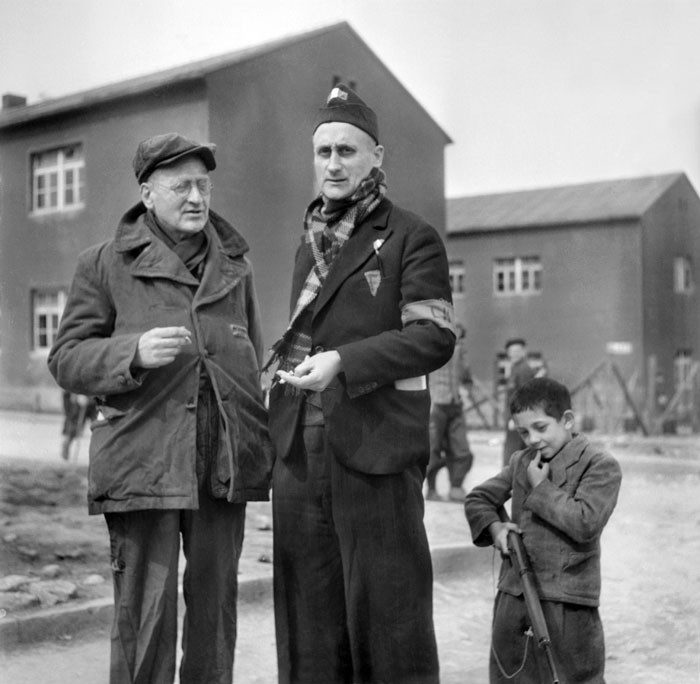
Image taken by Eric Schwab
Many Germans living in areas surrounding the camp claimed to have no knowledge of what was happening within the gates of Buchenwald. Between April 1938 and April 1945, some 238,380 people of various nationalities were incarcerated in Buchenwald; between 56,000 and 70,000 would perish in the camp.
American soldier leading German civilians from Weimar and the surrounding areas into Buchewald concentration camp following the camp’s liberation. The liberators of the camp were so appalled by the conditions within the camp that they made the local population bear witness to the atrocities.
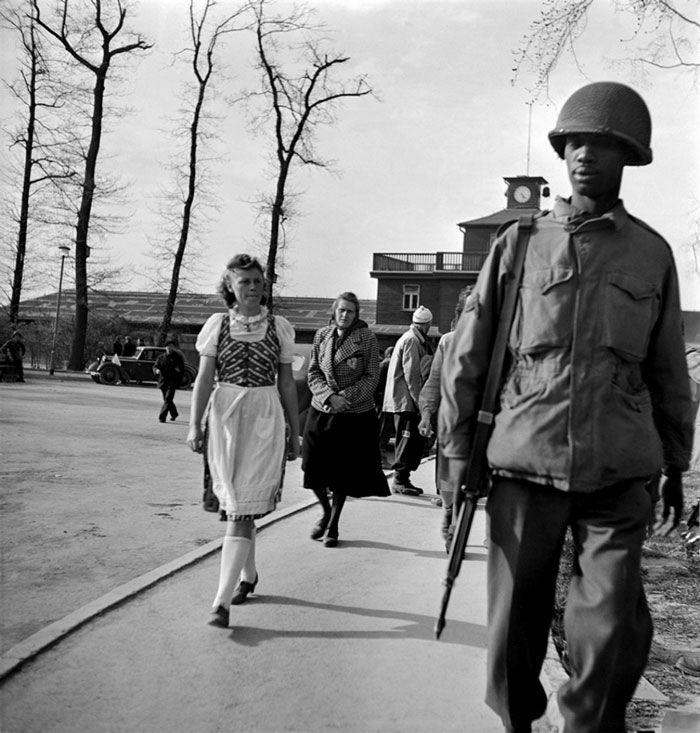
Image taken by Lee Miller
Children of various nationalities and religions liberated from Buchenwald concentration camp, flanked by several adult inmates (on the left, a Polish political prisoner, identifiable by his camp badge), marching out of captivity following the camp’s liberation by U.S. Army troops.
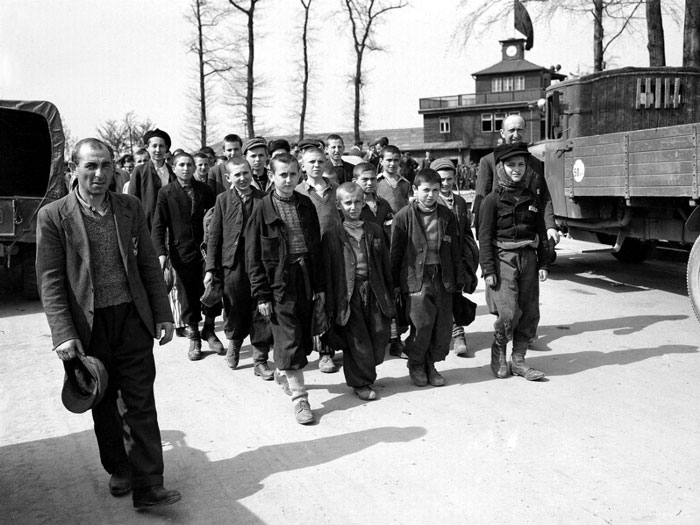
Buchenwald was partially evacuated by the Germans from April 6, 1945, until April 11, 1945. In the days before the arrival of American troops, thousands of the prisoners were forced to join evacuation marches to other camps.
On April 8, 1945, two prisoners were able to send out a message to the Allies via a hidden short-wave transmitter asking for help. After the Third United States Army were able to respond to the prisoners that they were on their way, a number of communist inmates stormed the watchtowers and killed the remaining guards, using arms they had been secretly collecting since 1942.
At 3:15 p.m. on 11 April 1945, a detachment of troops from the U.S. 9th Armored Infantry Battalion, from the 6th Armored Division, U.S. Third Army arrived at Buchenwald. Third Army Headquarters sent elements of the 80th Infantry Division to take control of the camp the following day.
U.S. Army soldiers speak to survivors of Buchenwald concentration camp
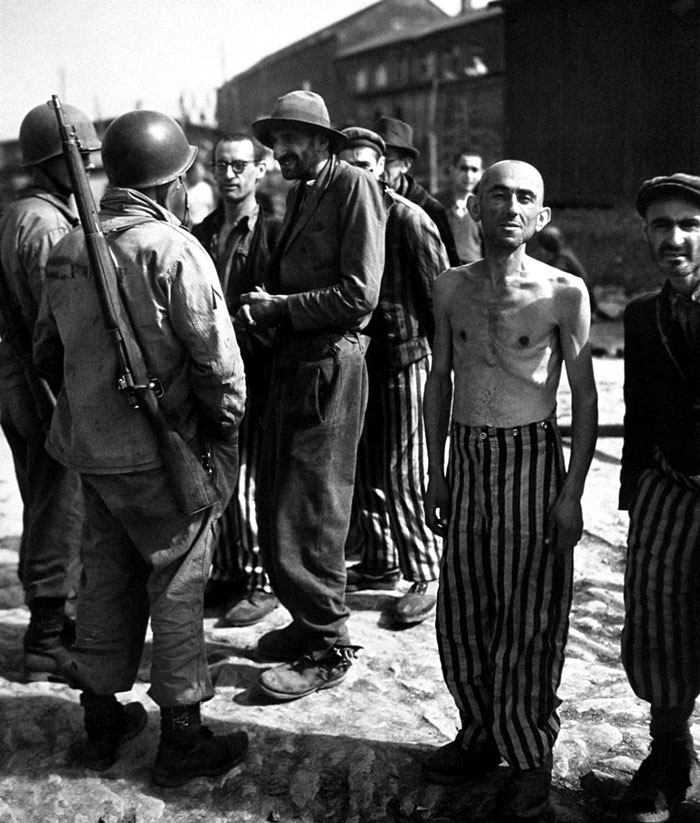
Two battered Buchenwald concentration camp guards are held prisoners by Allied Forces after liberating the camp. April 1945.
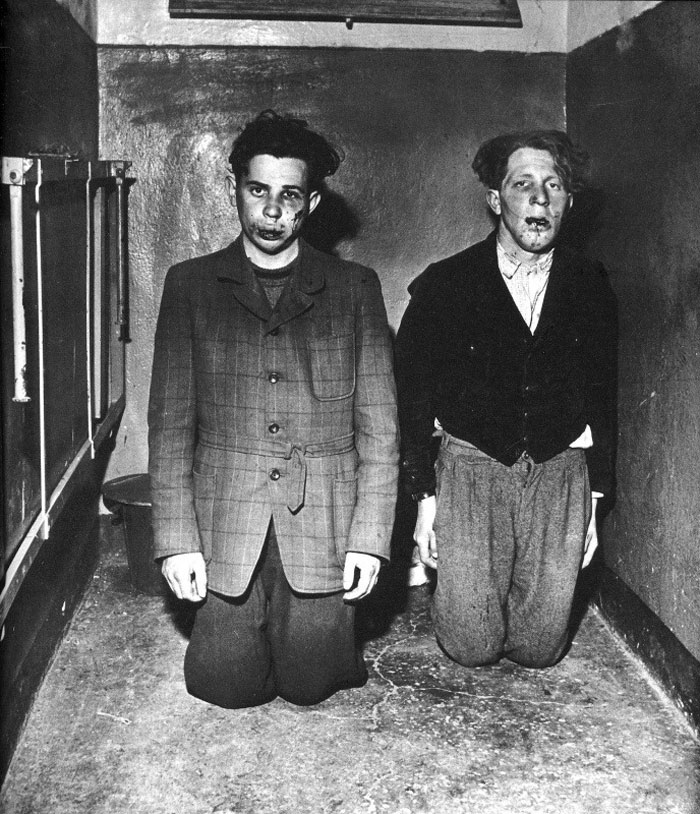
Image captured by American photographer Lee Miller
A burned corpse still wearing his cross in Leipzig-Thekla, a sub-camp of Buchenwald concentration camp, lies in the open after the camp was liberated by the U.S. 69th Infantry Division. On April 18, 1945, SS guards set fire to the barracks housing some 300 inmates and shot those who attempted to escape the flames.
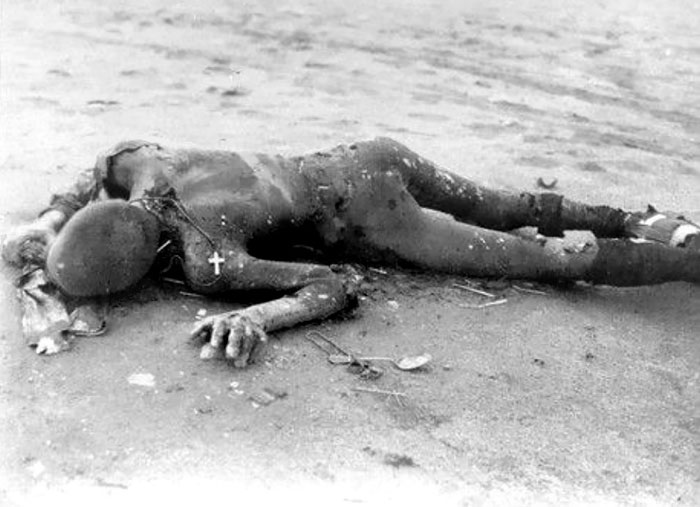
7-year-old survivor of the Buchenwald concentration camp complex waiting to be processed after liberation of the camp. He will then be transferred out of the camp and back to any surviving family members.
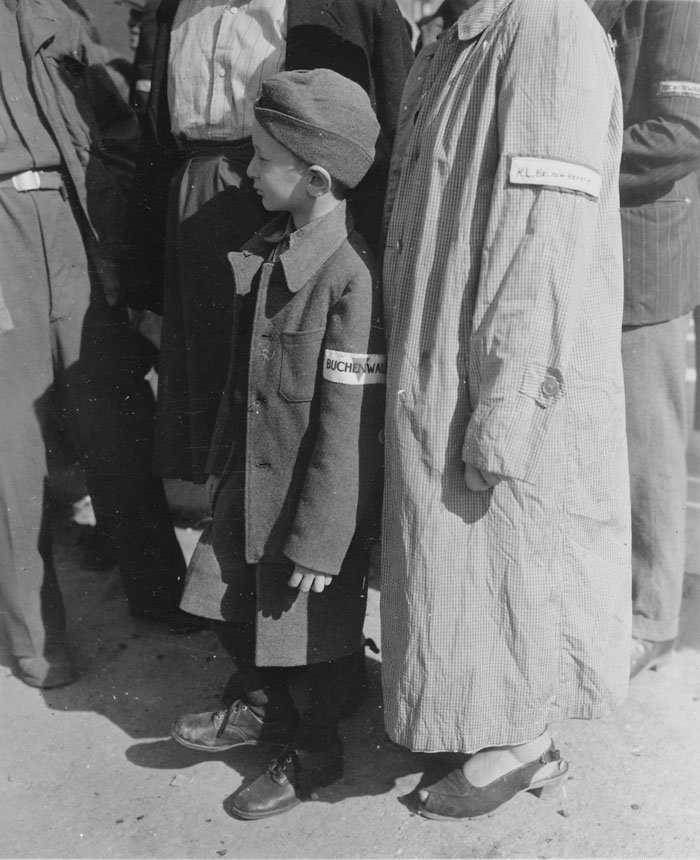
The charred corpse of an inmate at Leipzig-Thekla, a sub-camp of Buchenwald concentration camp, photographed by Allied soldiers of the U.S. 69th Infantry Division. On 18 April 1945, SS guards set fire to the barracks housing some 300 inmates and shot those who attempted to escape the flames. The sub-camp had been established in September 1943 to supply labor for the German war effort.
